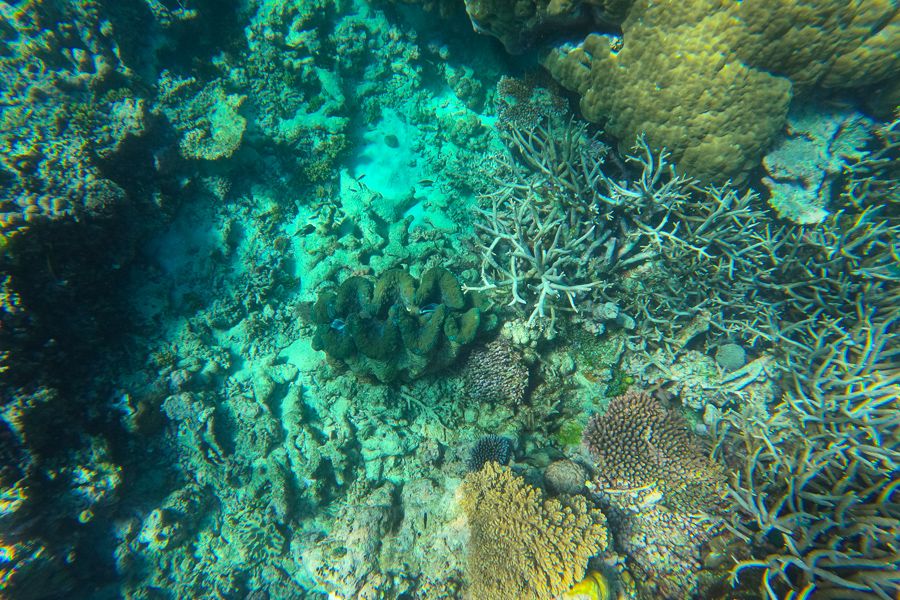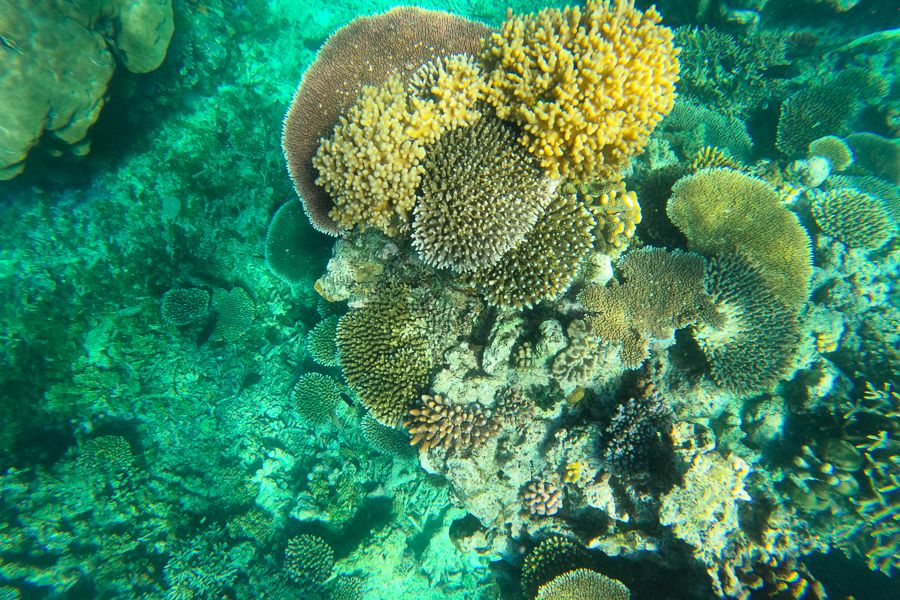Is the Great Barrier Reef Still Worth It?

Contrary to false news reports that it is mostly dead these days, the Great Barrier Reef is alive and thriving — and still definitely worth the visit! Not only does it remain the largest living structures on Earth (visible from space!), but it also retains its rich and diverse ecosystems. Did you know six of the seven sea turtles that roam the world's waters live on the Great Barrier Reef? Or that the Great Barrier Reef is home to the last remaining wild dugongs? Not to mention the dwarf minke whales and humpback whales that cruise through in winter, or the 1625 species of tropical fish and 400 types of coral!
In fact, at the risk of sounding alarmist, I would argue that now is the best time to visit the reef, because the false news making rounds about the reef's death aren't entirely unbased. You see, the slightest rise in temperature can inflict major damage on the reef, and with global temperatures on track to rise as much as 1.5°C by 2030, we can expect to be seeing more and more major bleaching events with less time in between for reefs to recover.
What is Coral Bleaching?

Bleaching doesn't necessarily equal certain death for coral, but coral does need time to recover and regenerate in the wake of a bleaching event. Bleaching is typically brought about by a sudden and at times prolonged rise in ocean temperatures. Warmer water temperatures results in an exodus of plankton, which the colourful polyps that cover corals feed on, in turn resulting in a mass exodus of ployps. As it is the polyps who provide corals with their luscious shades of pinks, oranges and yellows, their absence leaves the corals looking washed out, white, and bleached.
However, provided the water temperatures drop back to normal not too long after, plankton will return, followed by poylps, slowly allowing for the corals to regenerate, stablisise and return to their former glory. In the worst case scenario, which we're not far off witnessing on the Great Barrier Reef, the water conditions fail to return to normal and the coral is left naked, starving and vulnerable to disease, eventually leading to death.
The intention of this spiel is not to depress and demoralise potential visitors, but rather to urge them to get to the reef ASAP. Show and share with your communities how much love you have for Queensland's extra special World Wonder and help spread awareness that it is not too late to save it.
How to Save the Reef

First and foremost, visit the reef. Whether it's a simple snorkel on a day trip to Michaelmas Cay, or a three-day liveaboard tour to the Outer Reef complete with night diving, the best thing you can do for the reef is support the operators who work on and with it. Take your friends, your family, take photos, share stories, spread the world, build hype. And visit the Cairns Aquarium while you're in town! Learn about all of the different ecosystems that contribute to the reef's health, from high up in the mountains all the way through brackish creeks and out to the big wide blue.
Secondly, get educated and stay informed. I understand that the weight of the world's many, many, many issues can weigh just as heavy on the individual's mind and wellbeing, but I also believe that if we got ourselves into this trouble then we are required to dig ourselves out of it. And that means plugging in and staying aware of global events like rising temperatures, local events like deforestation (another major contributing factor to the reef's health), and personal day-to-day energy consumption — reduce, reuse, recycle.
On a more precise scale, marine biologists on the Great Barrier Reef are able to directly aid in reef regeneration through research, conservation and rehabilitation. On example of reef rehabilitation is coral harvesting. Coral harvesting typically occurs in areas damaged by hurricanes, which can reduce reefs to mere rubble and debris. Divers collect small coral fragments, not much larger than a finger, and take them back to a boat where they are zip-tied to steel frames called 'reef stars'. The reef stars are then stored in an underwater nursery until they're healthy and grown enough to be transferred to a reef in need, where they will spawn and spread.
What's the Best Way to See the Reef

The best way to see the Great Barrier Reef is via a snorkelling or scuba adventure. Cairns Tours has all the greatest hookups for day trips, overnight tours and extended liveaboards. If you don't have your scuba license and don't intend on getting it any time soon, the best of the reef can still be experienced by snorkelling (which is also offered on liveaboard vessels). Some operators offer glass bottom boat tours as well, which is a great way for young children to get a taste of the reef and its majestic marine life without even getting wet! The title pretty much says it all, but to elaborate, a glass bottom boat is a small vessel with a completely transparent floor where passengers can peer through to the underwater worlds passing by their feet. The tours typically include fun and informative commentary from expert marine biologists, too!















